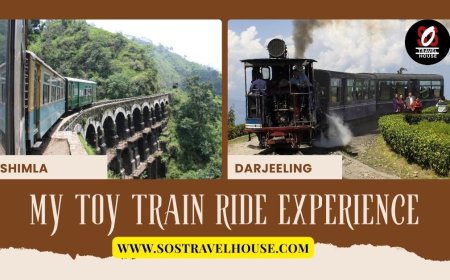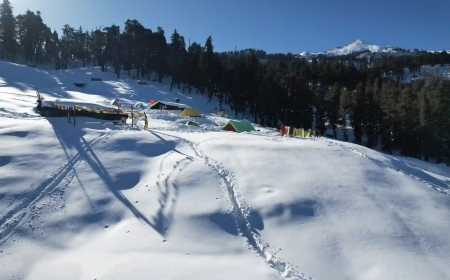Magical Bhutan: Festivals, Culture & Adventure in the Land of Happiness

Bhutan, the Land of the Thunder Dragon, is more than just a destination. Its a feeling. A place where you dont just travelyou connect. With its serene monasteries, snow-capped Himalayas, and cheerful people, Bhutan offers travelers a chance to dive into a culture that values happiness over materialism. One of the most captivating experiences for visitors is exploring the country's rich festival traditions. If you're curious how is Tshechu festival celebrated in Bhutan, you're in for a cultural feast! This vibrant celebration is more than just dance and colorsits spiritual, historic, and deeply rooted in Bhutanese identity.
Among all the Tshechus (festivals), the Paro Tshechu is a highlight. Its held every spring in the Paro Dzong courtyard and attracts thousands of locals and tourists alike. From masked dances to traditional music and colorful attire, this festival showcases Bhutan's rich spiritual heritage. But Bhutan isnt just about festivalsit's also an adventurers dreamland. Whether you seek thrilling treks, peaceful temples, or off-the-beaten-path villages, Bhutan delivers magic at every turn.
Why Visit Bhutan?
Bhutan is the only country in the world that measures its progress by Gross National Happiness. This concept focuses on sustainable development, cultural preservation, environmental conservation, and good governance. When you visit Bhutan, you're not just sightseeingyou're participating in a lifestyle deeply rooted in balance and mindfulness.
Fast Facts About Bhutan:
-
Capital: Thimphu
-
Population: Around 787,000 (2024 est.)
-
Official Religion: Vajrayana Buddhism
-
Best Time to Visit: March to May and September to November
Festivals that Touch the Soul
1. What is Tshechu and Why is it Important?
Tshechu means tenth day, and these festivals are celebrated on the 10th day of a month of the lunar calendar. These are Bhutans most sacred and colorful events. Locals believe attending Tshechu cleanses them of sins and brings blessings for the year ahead.
So, how is Tshechu festival celebrated in Bhutan?
-
Mask Dances (Cham): Monks and laymen perform dances wearing elaborate masks that represent deities and animals.
-
Public Blessings: Sacred relics are displayed to the public only during Tshechus.
-
Social Gathering: Its a time for locals to dress in their finest clothes and reunite with friends and family.
-
Cultural Exhibits: Traditional music, storytelling, and archery competitions take place.
Each region has its own Tshechu, and no two are exactly alike!
2. Spotlight on Paro Tshechu
If you plan to visit only one festival, make it the Paro Tshechu. This five-day festival takes place in March or April in the picturesque Paro Valley. It's celebrated in honor of Guru Rinpoche, who introduced Buddhism to Bhutan in the 8th century.
Key Highlights:
-
Unfurling of the Thongdrel: A massive religious scroll (30m x 45m) is displayed early in the morning on the last day. It's said that just seeing it cleanses a lifetime of sins.
-
Dance of the Black Hats: This is a mesmerizing dance performed by monks in silk robes and traditional black headgear.
-
Local Participation: The entire community, from children to elders, joins in with traditional dress, laughter, and joy.
Pro Tip: Book accommodations early if you're attending the Paro Tshechu. It draws large crowds, both local and international.
Beyond Festivals: Top Things to Do in Bhutan
While festivals bring color and joy, Bhutan offers a treasure trove of activities and places to explore year-round.
1. Trek the Famous Tigers Nest Monastery
Also known as Paro Taktsang, this iconic monastery is perched on a cliff 3,000 feet above the Paro Valley. The trek is challenging but absolutely worth it for the spiritual and scenic experience.
2. Explore Punakha Dzong
This 17th-century fortress is a masterpiece of Bhutanese architecture. It sits between two rivers and is especially beautiful in spring when the jacaranda trees bloom.
3. Discover Thimphu's Weekend Market
Looking for local crafts or organic produce? The capital citys weekend market offers an authentic glimpse into Bhutanese daily life.
4. Try Traditional Bhutanese Food
-
Ema Datshi: A spicy dish made from chilies and cheese, often dubbed the national dish.
-
Red Rice: Nutritious and commonly served with every meal.
-
Ara: A local alcoholic drink made from rice or maize.
Travel Tips for First-Time Visitors
1. Visa and Permits
All tourists (except from India, Bangladesh, and Maldives) require a visa. Bhutan follows a High Value, Low Impact tourism policy. Visitors must book through a licensed Bhutanese tour operator.
2. Sustainable Development Fee (SDF)
Since 2022, tourists are required to pay an SDF of USD $100 per night, which contributes to Bhutans conservation and development efforts.
3. What to Pack
-
Warm clothes (even in summer, nights can be chilly)
-
Comfortable walking shoes
-
A light rain jacket
-
Respectful attire for visiting temples and Dzongs
Best Time to Visit Bhutan
| Season | Months | Highlights |
|---|---|---|
| Spring | MarchMay | Rhododendron blooms, Paro Tshechu |
| Summer | JuneAugust | Lush greenery, occasional rainfall |
| Autumn | SeptNov | Clear skies, Thimphu Tshechu |
| Winter | DecFeb | Snowy views, fewer tourists |
Offbeat Experiences in Bhutan
Want to see a quieter, less-touristy side of Bhutan? Try these:
-
Bumthang Valley: Known as the spiritual heart of Bhutan.
-
Haa Valley: Remote and serene, great for hiking and cultural stays.
-
Laya Village: Accessible only by trek, inhabited by the semi-nomadic Layap people.
Bhutan for Adventure Lovers
Bhutan isn't just about peace and prayerits also about pumping adrenaline.
Top Adventures:
-
White-water rafting in Punakha
-
Mountain biking across rugged trails
-
Snowman Trek: One of the most difficult treks in the world, for serious trekkers only!
Frequently Asked Questions (FAQs)
Q1. How is Tshechu festival celebrated in Bhutan?
Tshechu festivals are celebrated with masked dances, prayers, and community gatherings. Locals wear their best traditional clothes, and monks perform religious dances. Sacred scrolls and relics are displayed, offering blessings to all attendees.
Q2. When does the Paro Tshechu take place?
The Paro Tshechu is held in March or April, depending on the lunar calendar. It lasts for five days and ends with the unfurling of a giant Thongdrel.
Q3. Is Bhutan safe for solo travelers?
Yes, Bhutan is considered one of the safest countries for travelers. The locals are friendly, and crime is extremely low.
Q4. Do I need a guide while traveling in Bhutan?
Yes. All foreign tourists (except from India, Maldives, and Bangladesh) must travel with a licensed Bhutanese guide and book their trip through a local tour operator.
Q5. Whats the currency in Bhutan?
The official currency is Ngultrum (BTN). Indian Rupees are also widely accepted.
Conclusion: Come for the Culture, Stay for the Peace
Bhutan is a one-of-a-kind destination where spirituality meets natural beauty. Whether you're attending the grand Paro Tshechu or simply soaking in the mountain air, this kingdom promises a life-changing experience. Youll leave with memories, blessings, and perhaps a deeper understanding of what happiness truly means.
So pack your bags, open your heart, and step into Bhutana land where festivals light up the soul and peace lives in every valley.





























